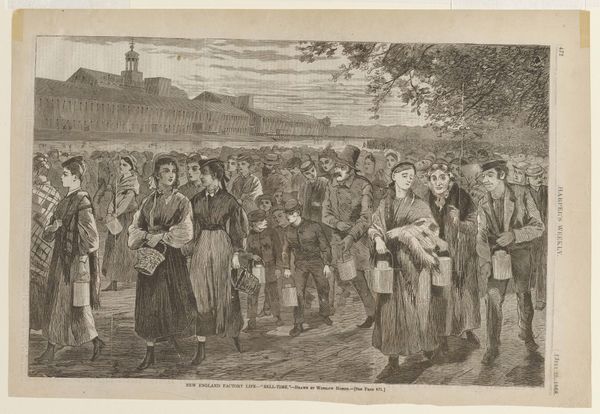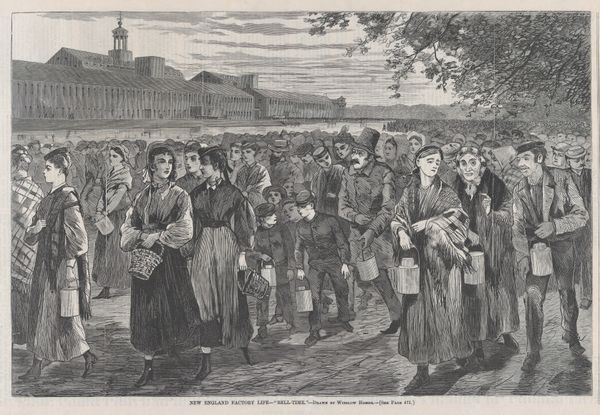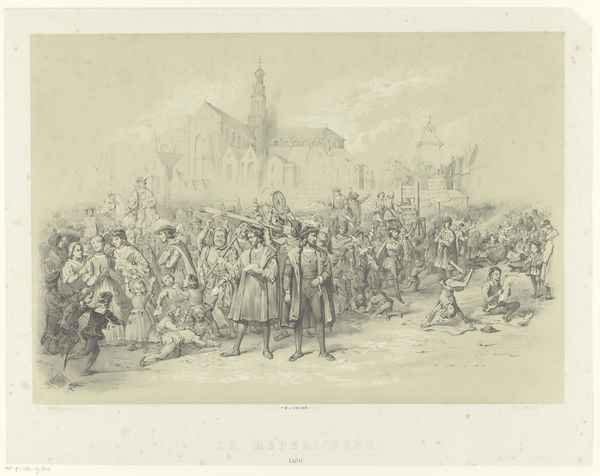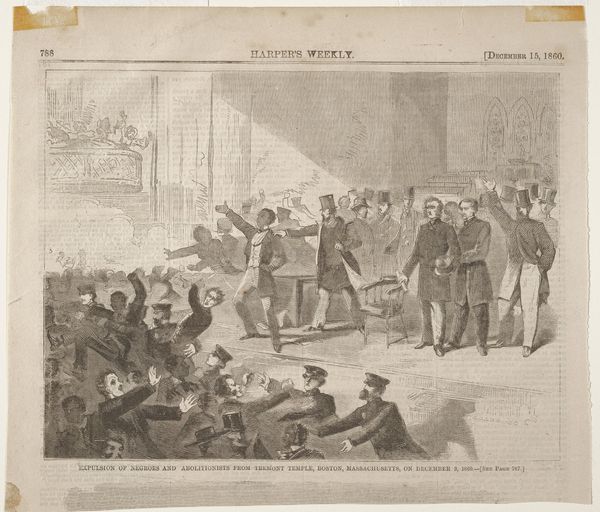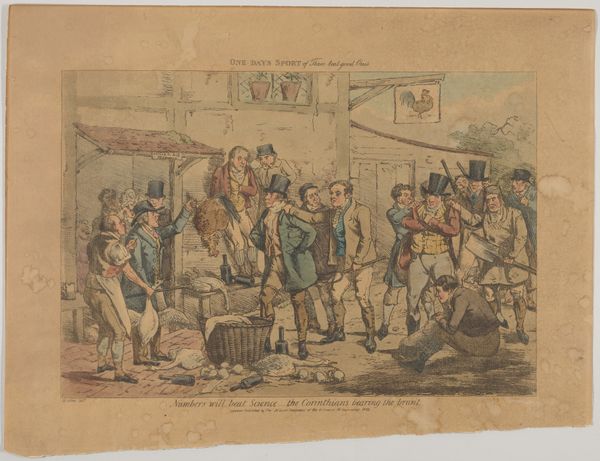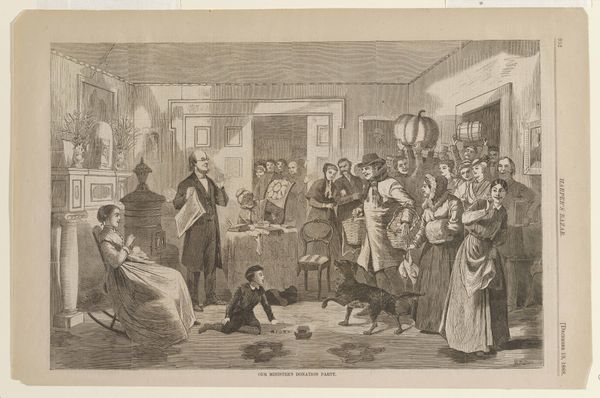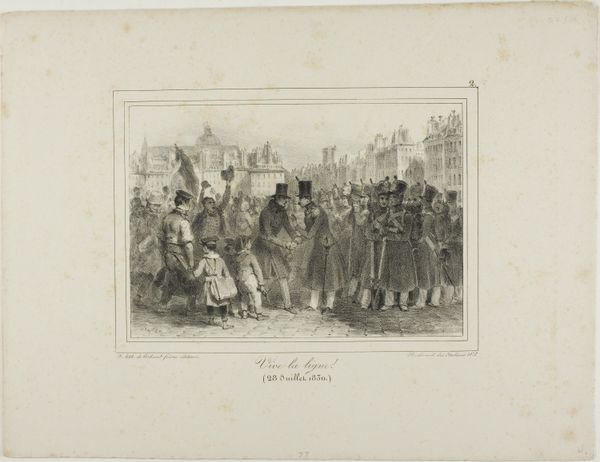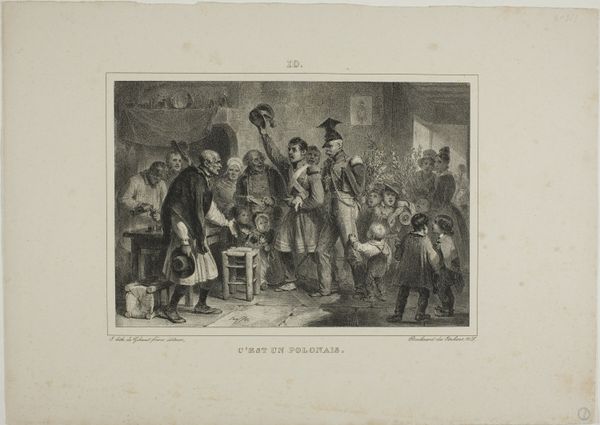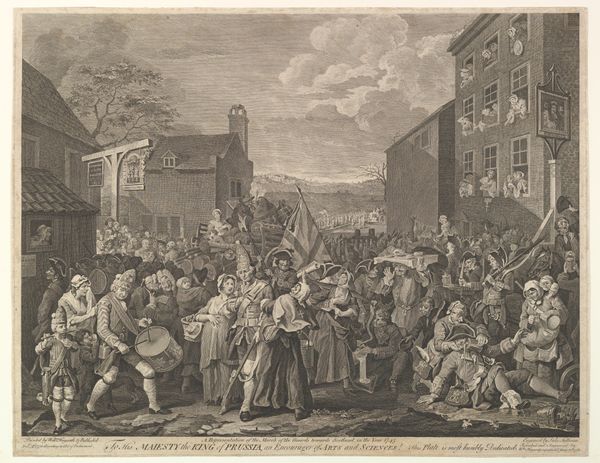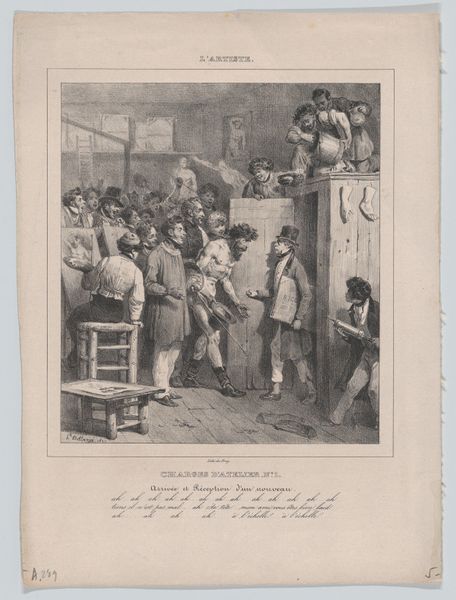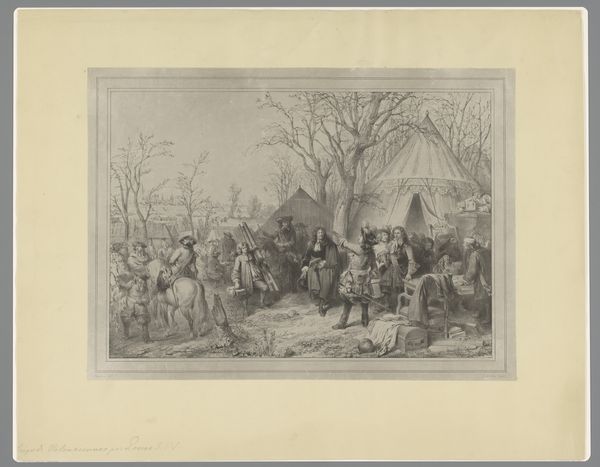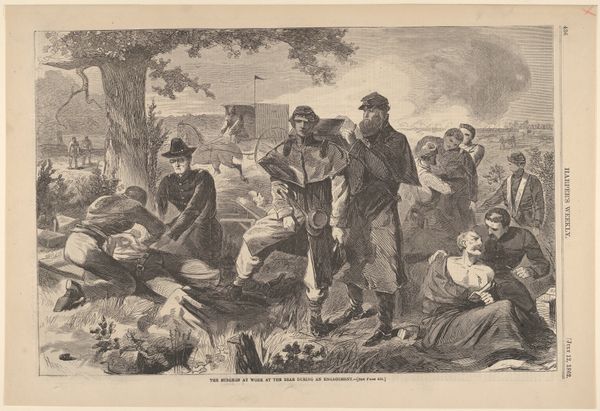
drawing, print, photography, woodcut, wood-engraving
#
drawing
# print
#
photography
#
woodcut
#
united-states
#
genre-painting
#
wood-engraving
#
realism
Dimensions: 5 x 9 3/8 in. (12.7 x 23.81 cm) (image)
Copyright: Public Domain
Curator: Winslow Homer's wood engraving, "New England Factory Life – Bell Time," produced in 1868. What strikes you first about this bustling scene? Editor: Immediately, I sense this relentless, almost somber march. The monochrome palette and tightly packed figures convey a feeling of constrained energy. It's less about the individual and more about the collective… almost a visual metaphor for industrial labor itself. Curator: That feeling aligns, I think, with the socio-political commentary embedded here. Homer depicts mill workers heading home from work, capturing the changing industrial landscape of post-Civil War America. Editor: It’s impossible to ignore that most of these workers appear to be women and children, which implicates broader systemic problems, no? Factory work provided new, albeit often exploitative, forms of independence for women, even young girls. Consider the historical debates around child labor at the time, and the paternalistic structures dictating the lives of young, working-class women. Curator: I agree; you feel that tension palpably in their expressions, don’t you? Look at how skillfully Homer uses line work to individualize each face, capturing fatigue, resignation, even a hint of defiance in their gazes. It reminds me how art, even in reproduction, is often an emotional echo of our world’s human truth. I see this work now with your insights, no longer as just an illustration, but as a stark mirror to systemic challenges that affect society's vulnerable workers. Editor: Right. So, what do you get out of understanding this image anew, as an artist? Curator: A new lens through which to consider all that work requires from people; the work *we* are requiring people do, even now. You have shifted my perspective in viewing labor inequity, but I was also just so pleased with how Homer could elicit all that drama within the precision of a wood engraving. Editor: Then perhaps Homer has fulfilled the mission: the aesthetic power that can affect consciousness, social justice, economic equality.
Comments
No comments
Be the first to comment and join the conversation on the ultimate creative platform.

